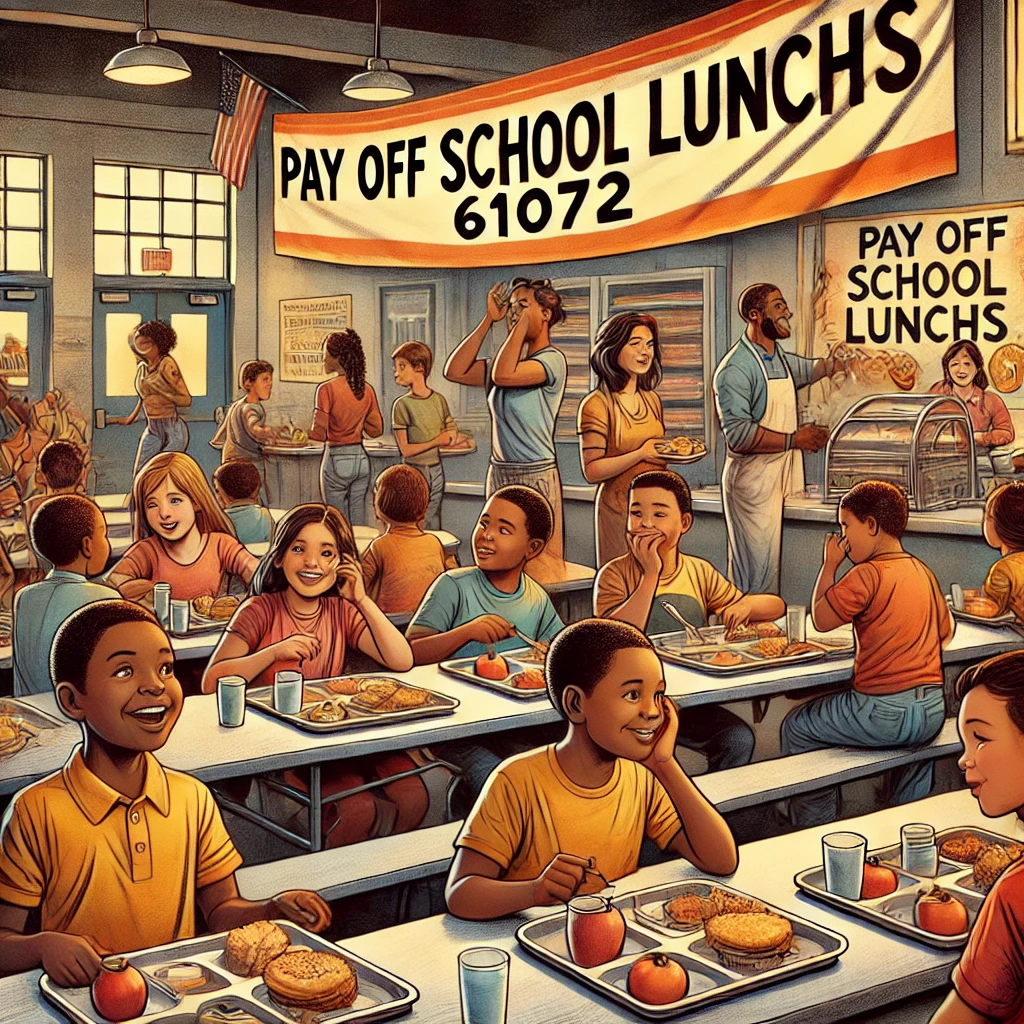Pay Off School Lunches 61072: A Growing Problem That Needs Urgent Attention
Introduction
Pay Off School Lunches 61072: School lunch debt is a growing issue that is often overlooked but significantly impacts children, families, and the education system.
This article explores the concerning rise in school lunch debts, with a particular focus on the community in 61072.
As a result of financial struggles, many families cannot afford school lunches, leaving children hungry and vulnerable to stigma.
This issue not only affects students’ ability to learn but also creates administrative and ethical dilemmas for schools.
Understanding this problem in depth is essential to fostering solutions that ensure no child goes hungry at school.
Read also: American Bully Life Expectancy: Indoor vs. Outdoor Living
The Problem of School Lunch Debt
School lunch debt occurs when parents fail to pay for their children’s meals, resulting in unpaid balances owed to schools.
This debt accumulates over time and can become a significant financial burden for schools already operating on limited budgets.
In 61072, the problem has reached critical levels, reflecting similar challenges faced by communities across the United States.
Although federal programs like the National School Lunch Program (NSLP) aim to assist, gaps in eligibility criteria often leave families unsupported.
Even with reduced-price lunch options, some families still find it difficult to pay the required amount consistently.
Consequently, schools are left to cover these costs, which can disrupt their ability to allocate funds for other educational needs.
Pay Off School Lunches 61072 : The Impact on Students
Hunger profoundly affects a child’s ability to focus, perform academically, and develop socially in the school environment.
When students do not have access to proper meals, they are more likely to experience fatigue, lack of concentration, and irritability.
Research consistently shows that well-fed students perform better on standardized tests and have improved attendance rates.
Unfortunately, students with unpaid lunch debts often face embarrassment or “lunch shaming,” where they are singled out for not paying.
In some cases, students are provided with alternative meals, such as a cold sandwich, further exacerbating feelings of exclusion.
As a result, these children may feel alienated from their peers, leading to lower self-esteem and disengagement from school activities.
Pay Off School Lunches 61072: Impact on Families
For families living in poverty or on the edge of financial stability, paying for school lunches can be a significant challenge.
Many parents must prioritize expenses such as rent, utilities, or medical bills over their children’s school meals.
Even families that do not qualify for free or reduced-price lunches may struggle, as the cost of living continues to rise.
Single-parent households or families with multiple children in school are particularly vulnerable to accumulating lunch debts.
This financial strain often creates a cycle of stress and shame, as parents feel unable to provide for their children’s basic needs.
In 61072, many families rely on seasonal jobs or low-wage employment, making it difficult to maintain consistent payments.
Pay Off School Lunches 61072 : Impact on Schools
Schools in 61072 face significant challenges in managing unpaid lunch debts, which drain already limited resources.
Administrative staff must spend valuable time tracking balances, sending reminders to parents, and coordinating with debt recovery agencies.
Additionally, schools are often forced to cover the cost of unpaid lunches, diverting funds from other essential programs.
Lunch shaming, while discouraged, still occurs in some districts, damaging the school’s reputation and trust within the community.
In extreme cases, schools turn to third-party collection agencies to recover debts, which can further stigmatize affected families.
This creates a difficult ethical dilemma for schools, as they must balance financial responsibilities with their commitment to student welfare.
Understanding the 61072 Community
The challenges in 61072 offer a glimpse into the broader socioeconomic issues driving school lunch debt nationwide.
This area, like many others, has a mix of families struggling to make ends meet due to unstable or low-paying jobs.
Local economic factors, such as seasonal employment or lack of access to well-paying jobs, exacerbate the problem.
Furthermore, some families earn just above the income threshold for free meals, leaving them ineligible for assistance despite need.
The community’s struggles highlight the importance of addressing both immediate needs and the systemic issues contributing to lunch debt.
Policies Addressing School Lunch Debt
Federal and state policies aim to alleviate school lunch debt, but implementation often falls short of addressing the root causes.
Programs like the USDA’s Community Eligibility Provision (CEP) provide free meals in high-poverty areas but have strict eligibility criteria.
In 61072, not all schools qualify for CEP, leaving some students without access to fully subsidized meals.
State laws prohibiting lunch shaming represent progress, but enforcement is inconsistent, and stigma persists in some communities.
Meanwhile, advocacy groups continue to push for universal free school meals to eliminate lunch debt entirely.
However, achieving this goal requires significant political will and financial investment at both the state and federal levels.
Grassroots Efforts to Pay Off School Lunches
Local communities and nonprofit organizations have stepped up to address lunch debt through creative and collaborative initiatives.
In 61072, several community groups have launched fundraising campaigns to pay off lunch debts for struggling families.
Crowdfunding platforms like GoFundMe have become popular tools for raising awareness and collecting donations.
Additionally, some schools partner with local businesses or philanthropists to sponsor meals for students in need.
These grassroots efforts demonstrate the power of community-driven solutions, though they often provide only temporary relief.
Long-term solutions will require systemic changes to ensure no child is left behind due to unpaid lunch debts.
The Role of Technology and Data
Technology offers promising tools to help schools manage and reduce lunch debt more efficiently.
Digital systems can track payments, flag at-risk families, and provide reminders to parents before debts become unmanageable.
Data analytics can also help schools identify patterns, such as seasonal spikes in lunch debt, to implement proactive measures.
Furthermore, integrating these systems with state and federal databases can streamline access to assistance programs.
By leveraging technology, schools can focus more on supporting students and less on administrative tasks related to debt management.





